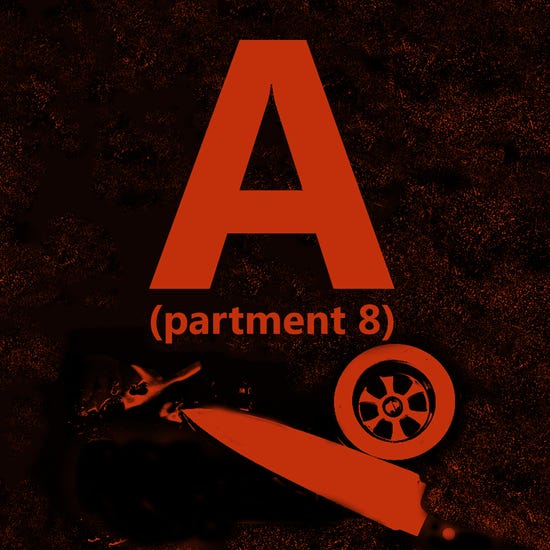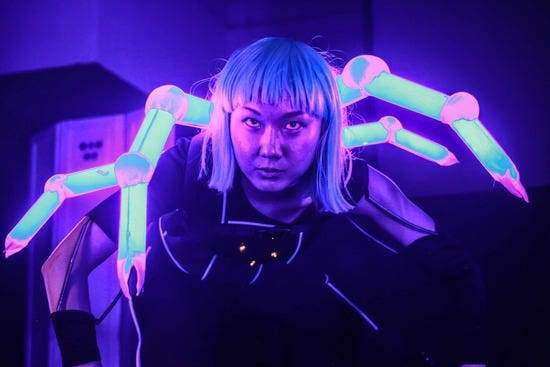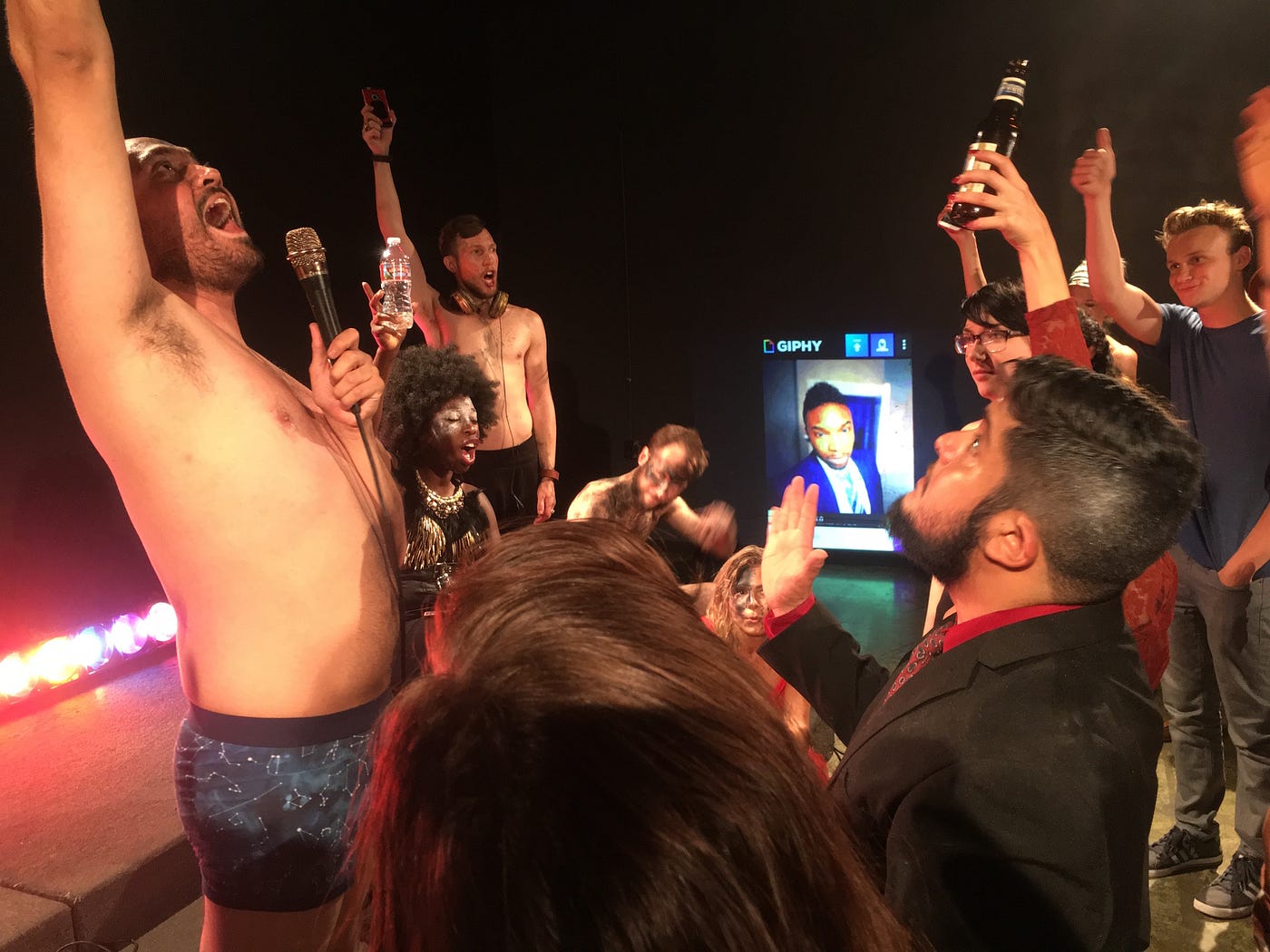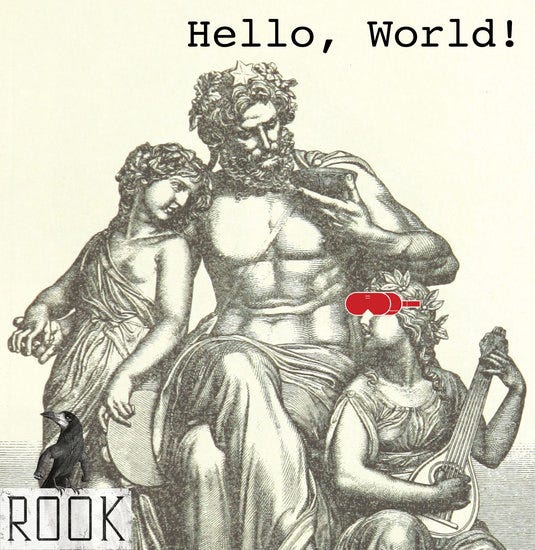
For the past few years June in LA has meant one thing: Fringe.
Okay, it’s meant more than one thing. There’s E3 and the LA Film Festival, and Burger Week, and that whole June Gloom thing. One year there was even E3, the Film Festival, the NBA Finals and the Stanley Cup all at the same time. It was a nightmare.
Basically: we get really excited about June in LA. There’s something for everyone, even theatre nerds.
Last year’s Hollywood Fringe Festival, aka HFF, aka Fringe, brought us our favorite show of 2015: Hamlet-Mobile. I’m sure some of you are still tired of hearing about it.
This year there are a handful of shows that are claiming the mantle of immersive or interactive, which is more than last year. Will we find our NEXT FAVORITE THING, or will we wind up uncovering a bunch of marketing cant?
It’s Fringe, so anything can happen.
This post will be periodically updated during HFF16.
ESSENTIAL

A(partment 8)
Last year writer-director Annie Lesser arrived on the scene with an unexpected surprise: Getting To Know You. A kind of theatrical musical chairs, the piece was designed to be narratively incomplete prompting the audience to compare notes if they wanted to get the whole story, but still provide an emotional arc for patrons.
A(partment 8) is something completely different.
Instead of a group experience this piece is strictly one on one. It’s short — only about ten minutes — and feels like a singular encounter from an extreme haunt, minus all the physical peril that fans of those experiences expect.
The tough thing here is that I don’t want to spoil the surprise, because I quite enjoyed this piece. So much so that I’m thinking about going back as a paying customer — tickets are $17, which is steep for a Fringe show but you are getting a one-on-one — and playing the scene differently.
The piece is emotionally interactive in that you are allowed to respond how you choose to the material that is presented to you, and those responses will color the actor’s performance — if not necessarily the text. The experience is something like acting out a scene with a partner where they know all their lines and you forgot to memorize yours. If you pay attention and don’t try to “drive the scene” — something my improv teachers scared out of me when I was 16 — it is possible to create a rather moving exprience out of some rather intense material.
So let’s post up the warnings: if you’re not comfortable with nudity (the actor’s, not yours), being blindfolded, touched, “mature themes,” and possibly getting wet/a bit messy then this is not for you.
If you dig the dark stuff, however, you need to get yourself a ticket before this thing sells out. Because we are going to sell it out.
Annie Lesser has a small wonder on her hands, and actress Keight Leighn pretty much defines the term fearless at this point. Lesser is positioning this as part of a series of immersive shorts she’s calling the ABC project: the goal is to make 26 of them. Ambitious, but if she can keep close to this level of work it will be well worth it.

OBLIVIOUS: A VIDEO GAME THEATRE EXPERIENCE
They promised me a mix of video games and theatre. They delivered. Oh, how Jenapher Zheng and her collaborators delivered.
This is one of those pieces that charms from minute one because it is so thought through.
In the lobby of the flight theatre we were instructed to fill out immigration forms for the United Nation-States of Surveillance (UNSS), the futuristic government which we are petitioning to join. These slips serve a dual function: to let the show runners know if we are willing to play the game at the heart of Oblivious, and to orient us a little into the world of the play.
Once filled out we’re allowed to enter the theatre, where a guide with a cybernetic enhancement is waiting to collect our form and send us to our seats. For this particular showing, the earliest on a Sunday afternoon, the only audience members were myself and a guy who had randomly walked up looking for a Fringe show to check out. The theatre fits dozens more, but with thin numbers we were elected to play. The game is actually keyed for three.
My accidental partner and I were brought on stage, and a sequence of pretty damn good CGI and live action videos oriented us to both the game and the game world. The story is of a dystopian surveillance state, and we’ve got one shot at taking down the corrupt A.I. at the heart of it all.
What followed was a series of fun, sometimes frantic, puzzles and game challenges involving hidden objects, laser tag blasters and flashlights. I can only imagine if it would be fun to watch people play the game. I’d like to think it would be: I know the crew had a blast with how much fun the other audience member and I were having.
It is a shame that the house was so empty: I talked with Zheng afterward and asked how the sales on the rest of the run are doing. She told me that it is going pretty good. That’s not good enough, No Pro LA community: you need to get your butts in those seats. Hoot and holler at the players as if this was a sporting event.
I HAVEN’T HAD THIS MUCH FUN AT FRINGE. EVER. PERIOD. END OF STORY.

I Was Hamlet
It has been a million years (read: maybe twenty) Since I read Heiner Müller’s 1979 postmodern powerhouse Hamletmachine. Long enough that it has faded into blotches of memory along with significant portions of the practical part of my theatre B.A.. Thankfully no prior knowledge of Müller’s work is required for Post Mortem Movement Theatre’s fetish club inspired I Was Hamlet, although familiarity with Shakespeare’s original text is assumed.
This is a kinky, driven, sandbox-style SRO piece made for a black box theatre. Director Angela Lopez and her core collaborators Kyle Johnston (Ghost), Angel Correa (Hamlet), and Emily Josephine (Ophelia/Elektra) have conjured forth a wicked hour that pulls in smart immersive techniques in service of a piece that mixes physical theatre with sharp, un-cloying agitprop. They even make giving permission to the audience to keep their cellphones out and documenting into something far more than a damn marketing gimmick. It becomes essential.
Now that doesn’t mean there aren’t rough edges that need tending to. The volume of the opening third of the work — both Correa’s Hamlet and the urgent underscore — work against the groove of the piece. At more human volumes, however, Correa’s performance has the kind of spark that breaches the barrier between performer and audience. One that becomes very direct during the fourth act (don’t fret: the original text is just nine, albeit dense, pages long) of the play. At that point the performance ceases to be a play and manages to become a Happening. Yes, complete with the capital “H.”
Almost as much fun as the charged up performances was watching the reaction of some of the audience. Performers too — this is Fringe — more than one had clearly never been to a piece that is so willing to burn down the fourth wall. In all honesty, I think I saw one young woman become One Of Us in real time.
Wherever Post Mortem Movement Theatre shows up next, immersive/sandbox/interactive/virtual/or plain old vanilla butts in seats sign me up.
FRINGE FUN

THE TRUTH
Shine On is a new theatre collective that is looking to make their mark with a piece that mixes together an audio walking tour with interactive vignettes along a route in the heart of Fringe.
It is good to see a company taking the risk of doing experiemental street theatre in the middle of the Festival. It’s something that we should see even more of at Fringe, and the mixture of street theatre and audio elements is pretty experimental for Fringe.
The Truth, however, has some obvious growing pains. The first big issue is tone: while it’s understandable that writer Anna Mavromati and director Marlee Delia would want to conceal their hand when it comes to some of the more uncanny elements of the piece, the jaunty vibe that kicks things off comes across as broadly comic. This undermines the story that Mavromati is telling.
Indeed there is a pretty sharp delta between what most of the actors are doing out on the streets and what is unfolding as the audience listens to the audio tracks provided. This could be an intentional choice, but if so it is a clunky one. The narrative framework is that the audience — all test subjects for a mysterious corporation — are just happening upon a mystery that unfolds across a few blocks, encountering a number of characters whose lives are intertwined.
For the most part the hand off from character to character are clunky, with a couple of nice exceptions. These lurching transitions don’t so much add to an air of unreality as basically just expose the weak joints in the framework.
That’s not to say that there are not moments that work. The more uncanny elements within the show are handled deftly by actors who take to the roles with grace. Taylor Thorne’s “Echo” in particular stands out as the kind of character you want to encounter at an immersive. After the show the snippets of conversation that could be caught from the crowds assembled outside the various spots on Theatre Row took on an added dimension thanks to the concept guiding the piece.
There’s some real potential here in The Truth, but it might have been better to let either the audio side of the production guide the whole thing or for the company to focus on the interactions between actors and audience and the transitions between scenes and let the audio thing go. For those among the Fringe audience who haven’t explored the worlds of podplays or spent much time in processionals seeking The Truth may be worth it. More experienced seekers will likely find the piece more interesting as an intellectual experiment with flashes of occasional theatrical lightning.

30:30:60
Let’s state this for the record: I don’t like one-person shows as a rule.
That rule is broken, now and then, in a way that fills me with delight. *30:30:60* didn’t quite hit the “delight” button, but it did bring a lot of laughs, some poignancy, and a touch of interactive frantic energy into the Three of Clubs bar.
The basic premise is this: former tennis pro Skyler Strong (writer-performer Anne Brashier) has just 60 minutes to complete 30 challenges before her 30th birthday. We — the invited guests at this competitive birthday bash — get to decide in what order she will face these tasks: which range from the absurd to the profound.
Brashier is an engaging performer, and the gimmick of the show ensures that it will be different each time. How different is a touch of a mystery. It was hard to tell if there was a built in emotional arc to the work, or if the different challenges acted as triggers which unlocked Skyler’s secrets.
Those inclined to find out are in luck: each ticket for the show — a commemorative match book — acts as a return pass for another engagement. So if you really want to know…
PASS ON IT

HELLO WORLD!
This mash-up of VR video and theatre is a solution in search of a problem. The worse news: all the bugs haven’t been worked out and the intended experience doesn’t work.
Creator Alex Suha and cohort have been working on a way to synch smartphones playing 360 video so that a live performance can interact seamlessly with pre-recorded VR elements. They’re not the first people to jump into the synching VR space, but they *might* be the first to attempt it with theatre. (There are a lot of experiments out there in the wide world, it is very hard to give a definitive answer to that question.)
Unfortunately for Rook Theater, the program wasn’t up and running in time for the performance I caught during the first weekend of Fringe. So the hack was to have the entire audience download the video off the server and get everyone on the same page in order to start the video at the same time.
Have you ever herded cats? It was like that. And this was a relatively savvy audience: everyone had brought their own devices and most everybody had downloaded the needed player.
After what felt like 15 minutes of getting everything up and running, which was forgivable, the play started.
What Hello World! never does is answer the question: why? Why have one part of the “story” on stage and the other in VR. I put “story” in quotes here because I could not tell you who the hell any of the characters were or why they were doing what they were doing. There were some vague themes about primordial sexual violence and modernity, which involved the acting out of a frantic, kinetic sexual assault sequence. Given the news of the past week it was jarring, and frankly it didn’t really pay off even in the context of the narrative so I’m not sure what the hell it was doing there.
I’m not sure what any of us were doing there.
Other than deconstructing what wasn’t working in real time.
If I’m seeming angry here it is because I am. I think of all the effort that goes into producing a Fringe show. Then all the effort that goes into filming 360 video. Add to that all the effort that goes into app development. That’s a lot of effort. That no one seems to have stopped to ask how all this stuff should be playing off each other boils my blood.
That’s the first question they should have asked.
The sound inside the headphones could have commented on the action onstage. So too could have the video: revealing the hidden truth behind the world of the action onstage. Instead we got a stilted series of scenes that didn’t add up to a greater whole, black screens, a countdown clock, and an actor who had to growl “put on your goggles” at the end of a sequence making that the first actual words spoken by a performer onstage. If Rook Theatre wants to continue with these experiments they damn well better get to answering the question of “why.”
I can’t even recommend this for people who like edgy, super experimental tech stuff. (Like yours truly.) This is one show that isn’t even ready for beta testing yet. If you came to see this because it was posted in No Pro: I AM SORRY.




















Discussion